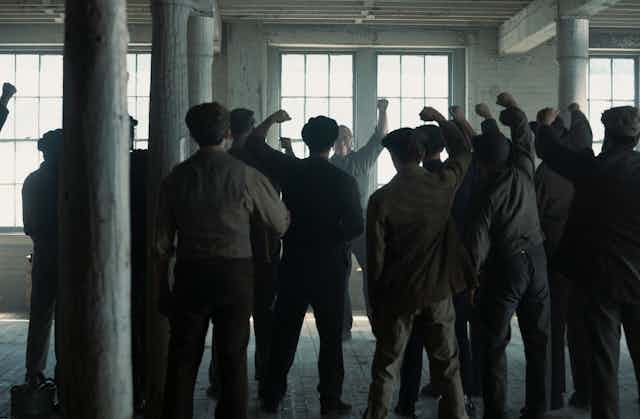“The opera is where society puts itself on display,” claims Bertha Russell, one of the main protagonists in season two of HBO’s The Gilded Age.
New York, where the show is set, was at the centre of the era of late 19th-century American history from which the programme takes its name. The Gilded Age was a period of marked economic growth and development during which many American cities, particularly New York, rapidly industrialised.
Individuals and families who made their money through these developments quickly came into conflict with those with inherited wealth. The Gilded Age’s second series highlights how these clashes manifested in the arts. Both Bertha and George Russell, desperate for societal acceptance, provide considerable support to the newly established Metropolitan Opera House, an emerging rival to old money’s Academy of Music.
Julian Fellowes, famous for writing Downton Abbey, is behind the show, framing the programme as a prequel to its UK counterpart. The Gilded Age, though, is more than just a transatlantic companion to an award-winning British period drama. Its episodes, set in the 1880s, chart the conflict between the nouveau riche Russell family and the combined old-monied Van Rhijn and Brook clans, who reside in the same street in Manhattan’s prosperous Upper East Side.
“Old” and “new” money tensions form the basis of The Gilded Age. Yet the programme’s storylines showcase other societal developments affecting New York City and the US during this period.
Class struggle
Most Americans did not possess the wealth or comforts that The Gilded Age’s upper-class protagonists enjoyed. Only a minority reaped the financial rewards of increasing trade and industrialisation. Many people, in New York City and across the country, consistently struggled to make ends meet. Starvation and poor sanitary conditions were rife while a few industrial elites accumulated considerable riches.
Nowhere was this more apparent than New York where, by 1892, 27% of the US’s millionaires lived. The most infamous industrial tycoons of the time all had links to the city. The railroad magnate Jay Gould, who Fellowes used as inspiration for George Russell, was New York born and bred. The Rockefeller family, who owned the Standard Oil Company, also lived in Manhattan.
The growing inequality gap between richest and poorest in American society resulted in many manufacturing workers forming trade unions. These organisations pushed for a greater share of America’s increasing riches, campaigning for higher wages and improved working conditions.
The Gilded Age portrays these developments through Russell’s struggles with trade unionists working at his Pennsylvanian mills. Fellowes’ setting of this tussle in the state directly north of New York is no coincidence. In 1892, workers at the Homestead Steel Works in Pennsylvania organised a strike and a lockout. The industrialist Andrew Carnegie, who owned the mill, responded by paying a private security firm to storm the factory, beat the strikers into submission and thereby quash the dispute.
Racial divisions
The Gilded Age also highlights racial divisions. The second series’ opening scene depicts the white Astor, Russell and Van Rhijn families attending an Easter Sunday sermon in the Upper East Side. Fellowes compares this idyllic vision with an austere all-black service that the African American Scott family sit through.
The situation in the northeast US for African Americans differed to southern states, where laws separated black people from the rest of the population in public spaces. But segregation, despite not being formally codified in the north, still dominated most areas of this society.
Most African Americans usually attended different schools, lived in separate neighbourhoods, and attended separate places of worship to their white counterparts. These pervasive norms, even for middle-class African Americans like the Scotts, governed society, prohibiting economic and social progress for most black Americans.
Fellowes, as with his coverage of changes to the British social class structure during the early 20th century in Downton Abbey, does not interrogate these issues. Rather, he presents these developments on screen as challenges that the main characters, regardless of their class or race, must navigate.
Still, The Gilded Age provides context to these developments, dramatising proceedings in a New York City on the cusp of modernity, with the associated issues this process brought about.

Looking for something good? Cut through the noise with a carefully curated selection of the latest releases, live events and exhibitions, straight to your inbox every fortnight, on Fridays. Sign up here.

